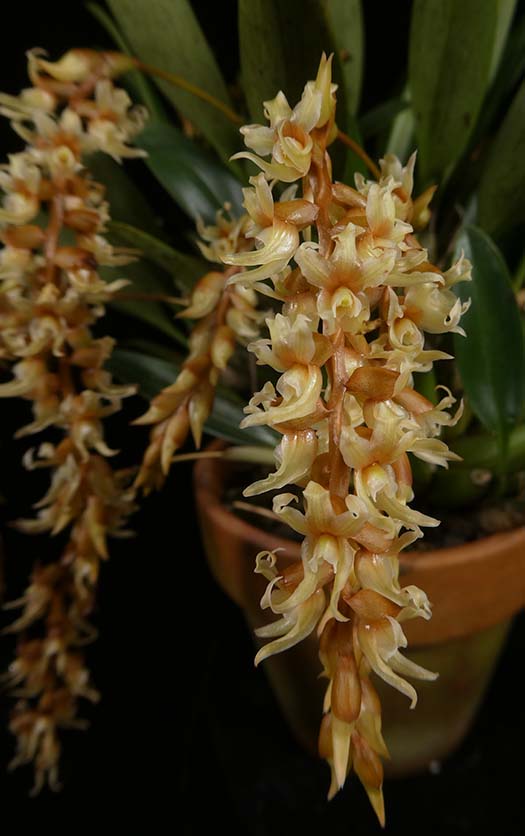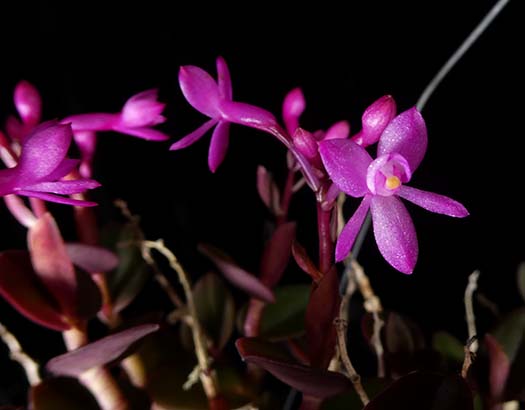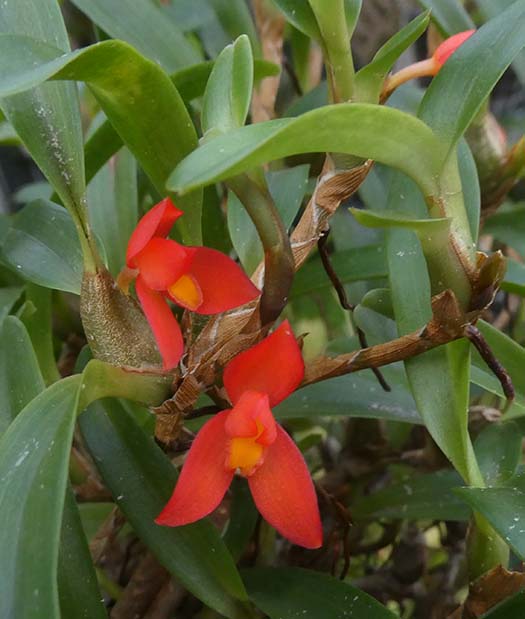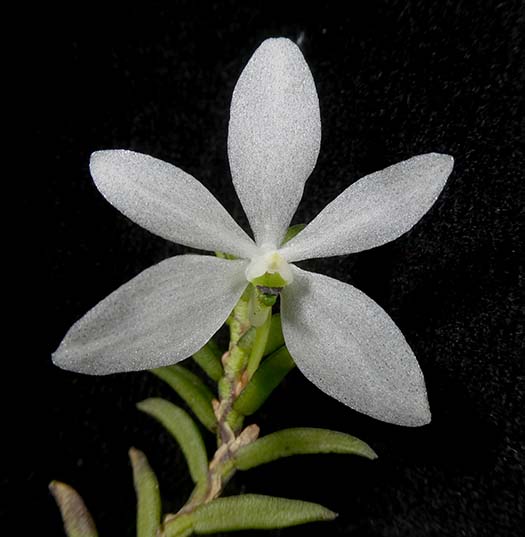December 2023
From Kurt Shanebeck:
|
|
Outdoors coastal, north of Los Angeles: |
|
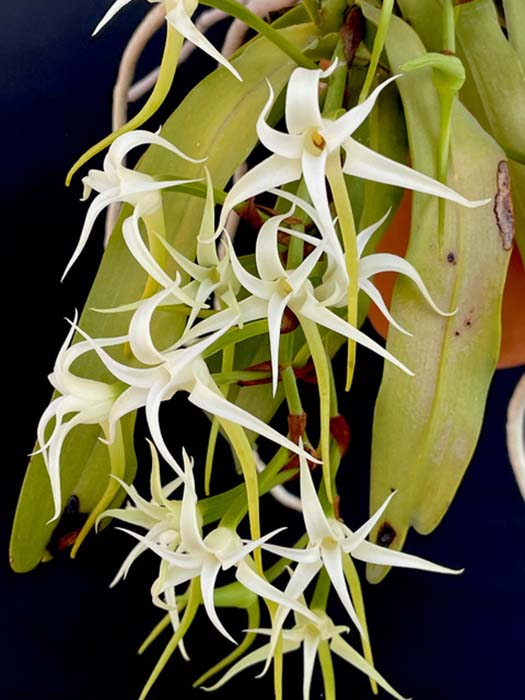
Cyrtorchis arcuataWidespread in Africa at elevations of 600-2500m. Growing potted with bright light. |
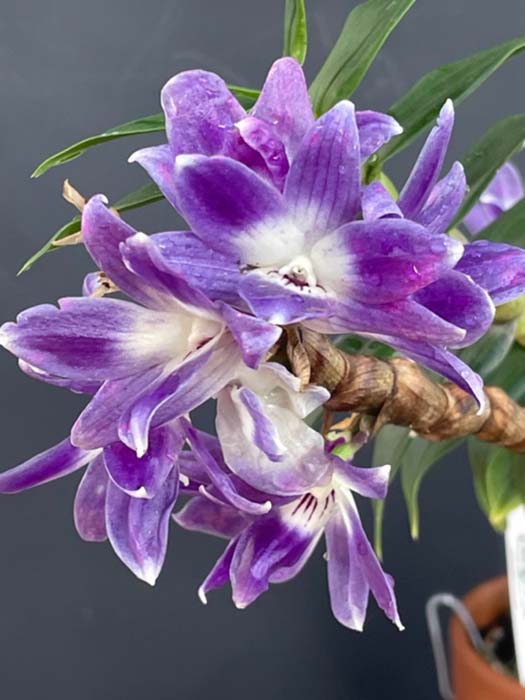
Dendrobium victoria-reginaeNative to the Philippines. Growing potted with moderately bright light and frequent water. |
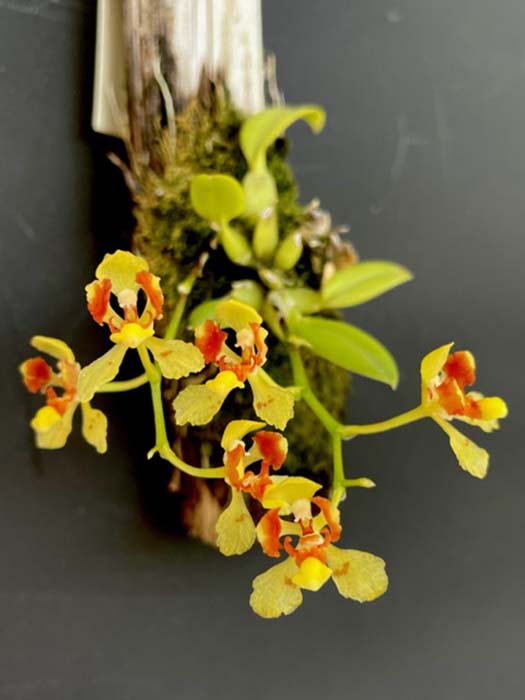
Gomesa colorataEpiphyte from Brazil. Growing mounted and shady. |
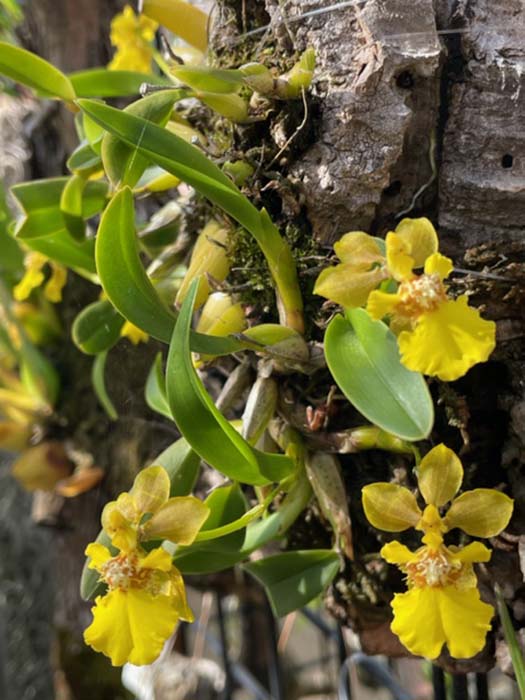
Gomesa longipesEpiphyte from Brazil, Peru and Paraguay. Growing mounted and shady. |
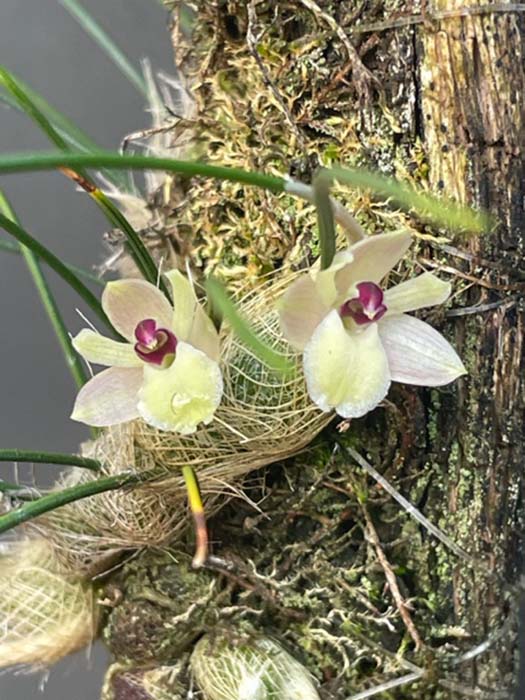
Isabelia virginalisBrazilian species with unusual basket-like fibers around the pseudobulb. Growing mounted with bright light. |

Laelia x gouldianaMexican species first described in 1888, but has never been observed in the wild. Now confirmed as a hybrid by DNA analysis, but unconfirmed if it was a naturally occurring hybrid. Growing potted and bright. |
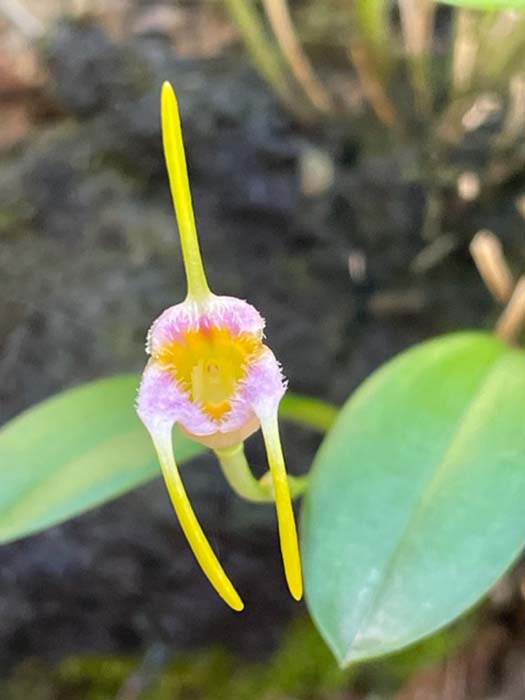
Masdevallia paivaeanaEpiphyte or lithophyte from Peru and Bolivia at elevations of 2450-2750m. Growing mounted and shady. |
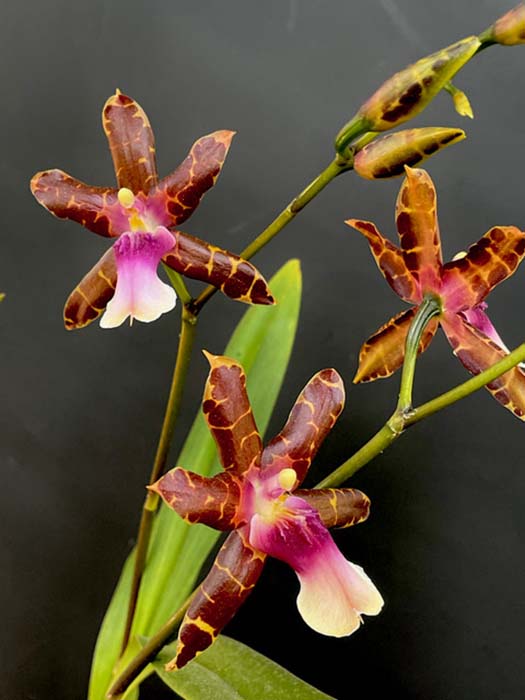
Miltonia clowesiiEpiphyte from Brazil. Growing potted with bright light.
|
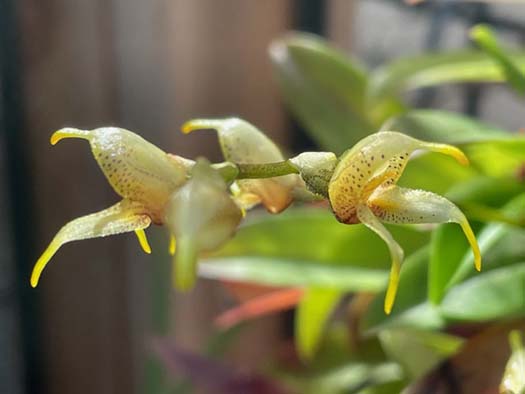
Masdevallia polystictaFrom Ecuador and Peru at elevations of 1600-3000m. Growing potted and shady. |

Prosthechea radiataFrom Central America at elevations of 150-2000m. Growing potted with bright light. |
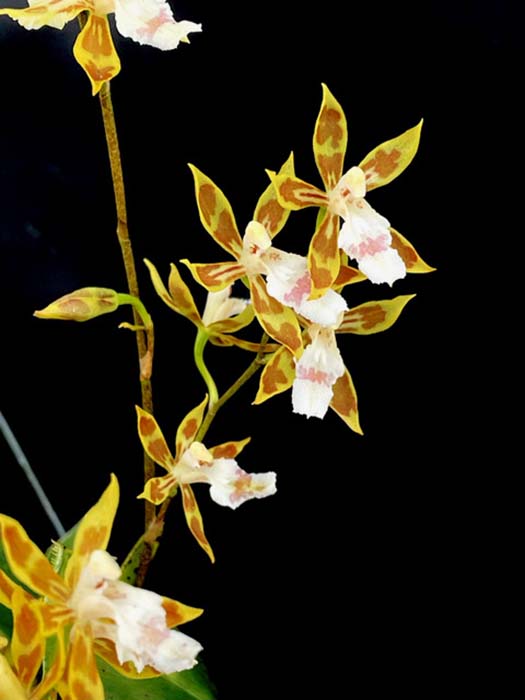
Oncidium constrictumFrom Venezuela, Columbia and Ecuador at elevations of 1800-2300m. Growing potted in moss with moderate light. |

Oncidium forbesiiEpiphyte from Brazil at elevations of 50-1200m. Growing mounted with bright light.
|
From Scott McGregor:All orchids grown outdoors, coastal southern California |
|
Coelogyne mooreana
|
|
Bulbophyllum pardalotumEasy grower with flowers that open briefly in the mornings, close by noon and reopen on successive days for a couple weeks. |
|
Maxillaria dilloniiBlooms 4-5 times per year with large flowers (for a Maxillaria). Large-ish plant, but stays compact. |
Restrepia species (antennifera)Restrepia species, probably antennifera. Yeah, I know, two aphids that I only spotted as I cropped the pic! |
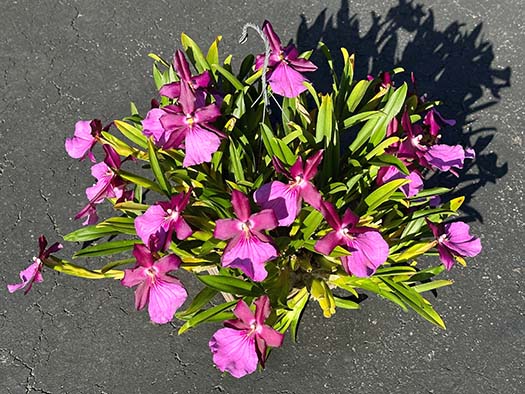
Miltonia moreliana 'Laurie' HCC/AOSA month later, still in fabulous bloom, at the end of November.
|
|
Isochilus sp "OZ" (Columbia), probably majorSold as species “OZ” from Columbia, probably major or a similar species |
|
From Roberta Fox:Coastal southern California |
|
Outside in the Back Yard: |
|
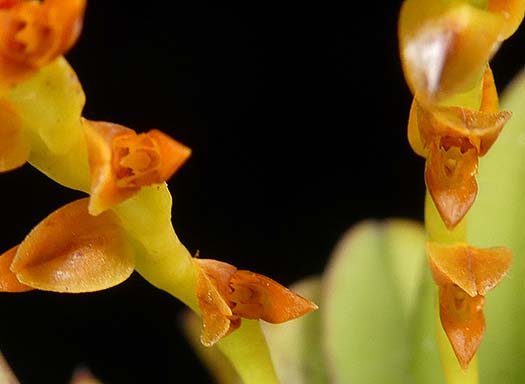
Acianthera (Pleurothallis) ochreataThick, succulent leaves, this species grows lithophytically in rocky areas of eastern Brazil, elevations 800-1500 m. I grow it in mostly gravel with just a bit of organic in full sun, like the rupiculous Laelias. |
|
 Cattleya labiata f. alba |
|
The C. labiata f. coerulea is line bred, with 6-7 inch flowers. The flowers on the alba are about 5 inches. Grown with only a bit of overhead protection from the rain. Plants are smaller than those that other people grow in the greenhouse, but they seem to have no problem with chilly nights. Native to southern Brazil, elevations 500-1000 m. I learned about their cold-tolerance from Steve Champlin of Floralia Orchids. He assured me that they would do fine outdoors where I live, and he was right! They grow much better for me outside than they did in the greenhouse. |
|
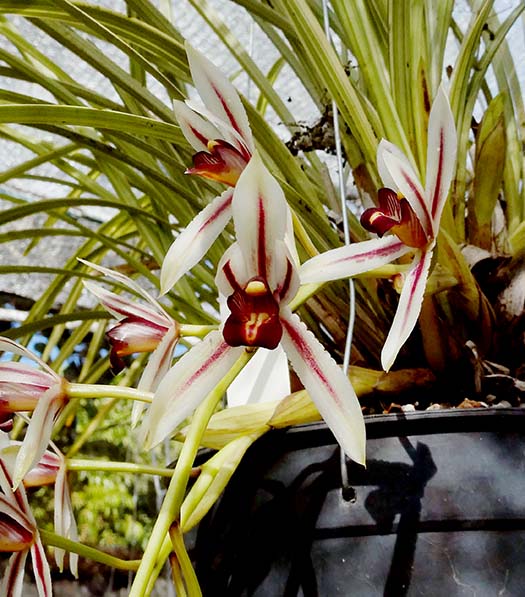
Cymbidium dayanum (variegated leaf)Typical Cymbidium dayanum flowers, but lovely variegated foliage. |
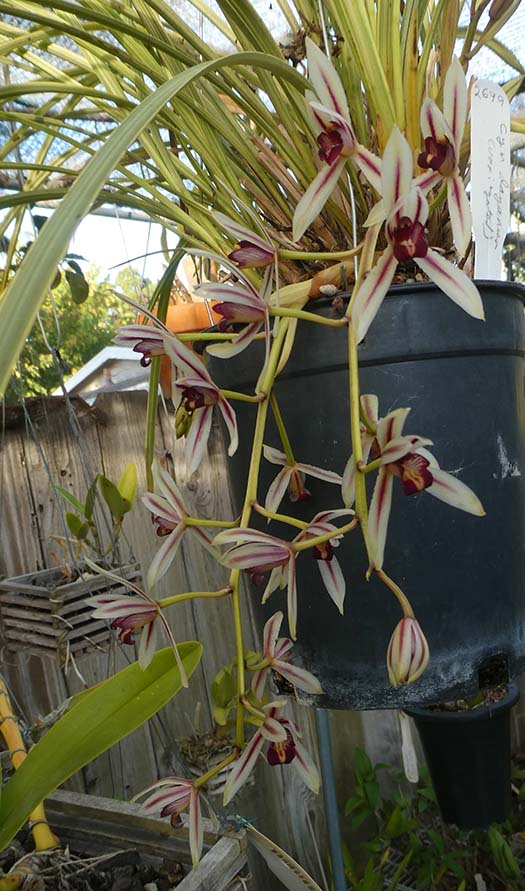 |

Dendrobium hookerianumNative to Nepal, northern India, and Yunnan, China. It blooms on bare canes. As with most of the rest of my deciduous and semi-deciduous Dendrobiums, it doesn't get dried out in winter, but the cold seems to be adequate to be considered "rest". In their habitat, they may not get much rain in winter, but it's humid and so they get overnight dew.
|
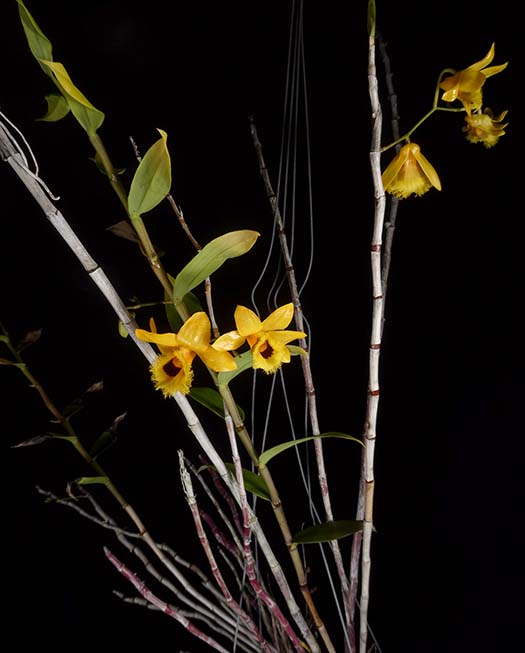 |
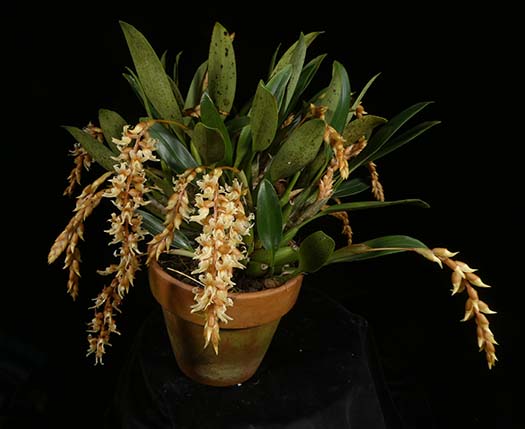 Dendrochilum cootesiiNative to the Phiippines, at elevations 1200-2000 m. Flowers are relatively large for the genus, on a small plant. That is a 4 inch pot, for scale
|
|

Diplocaulobium (Dendrobium) aratriferumWhen these bloom you had better be paying attention... flowers last less than a day. It can flush bloom several times a year and pop a few flowers more often. The timing is a mystery. Often (but not always) Scott's Diplocaulobiums bloom on the same day as mine. We have looked for patterns in the weather or lunar phase, so far no pattern has emerged. This month I got two flush blooms. Flowers have the fragrance of watermelon. |
 |
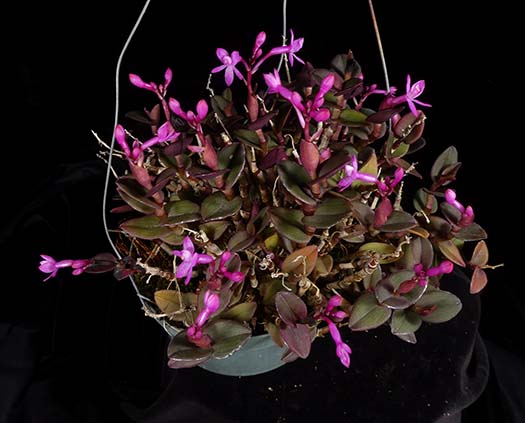 |
|
Epidendrum quisayanumFlowers are only about 3/8 inch, but brilliant in color, and there are lots of them. Mat-lke growth habit. It is native to Ecuador at elevations 1300-3300 m. I suspect that it grows better in the cooler coastal area than it would inland. |
|
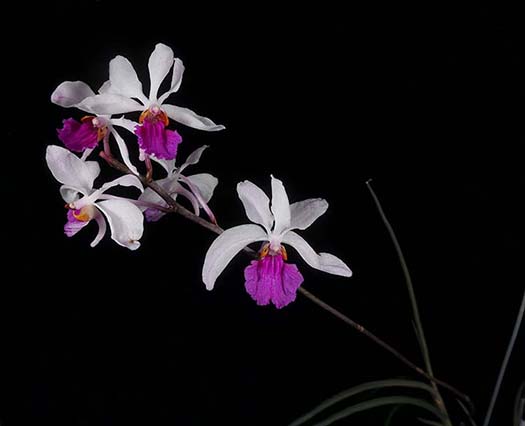 Holcoglossum kimballianumI have had difficulty with this species in the past, but this plant is growing very well, with long, vigorous roots. This is its first bloom. Thank you Ed Lyszczek! It grows in a wood basket with little medium. Native to southern China and southeast Asia, elevation 1200-1500 m. |
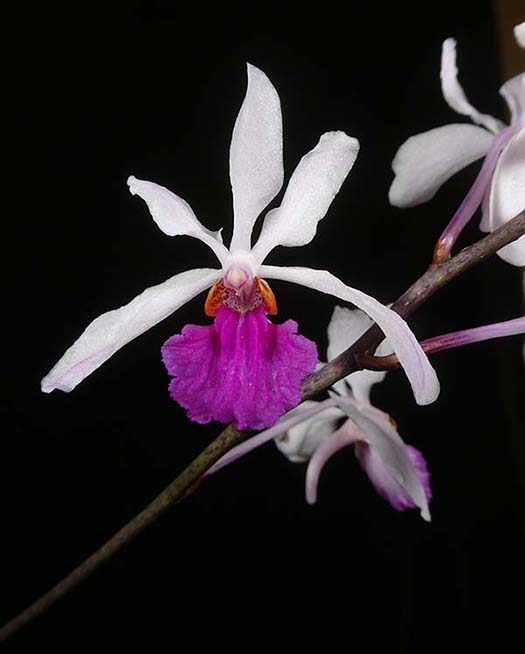 |
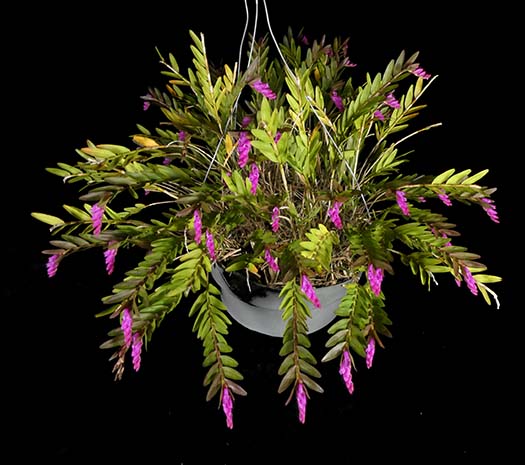 Isochilus sp.When purchased, it was labeled as coming from Colombia. However, that location is uncertain. It could also be from Central America. It is extremely vigorous and floriforous. The flowers tend to self-pollinate, so after blooming I'll have seed pods at the end of each growth. It is blooming very early this year, usually blooms in January. |
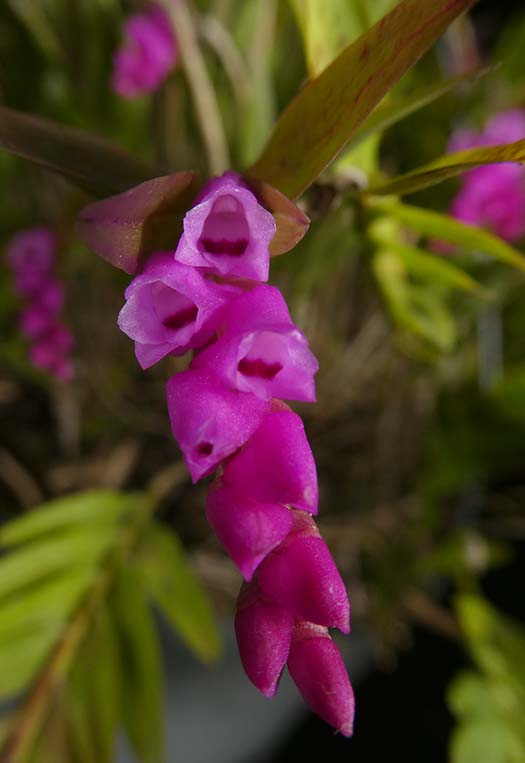 |
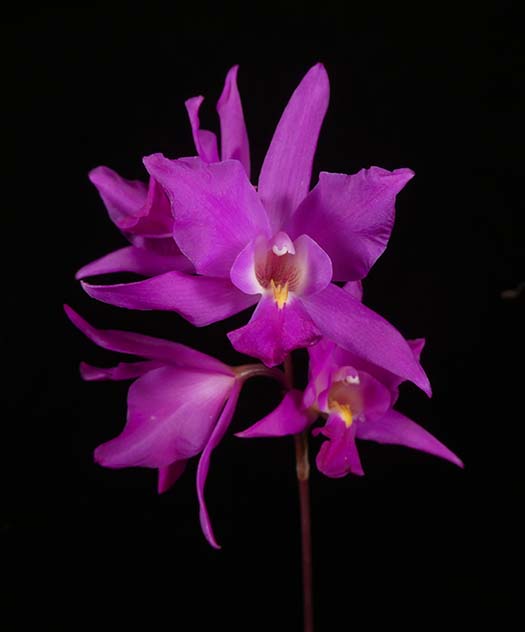
Laelia gouldianaThe flowers have a crystalline luster in the sun, with intense color saturation, Another Mexican species. |
|
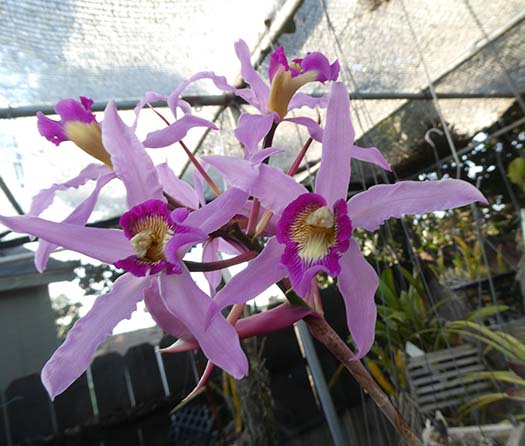
Laelia superbiensNot a miniature. Spike is 3-4 feet long or more. From southern Mexico, into Guatemala and Honduras. |
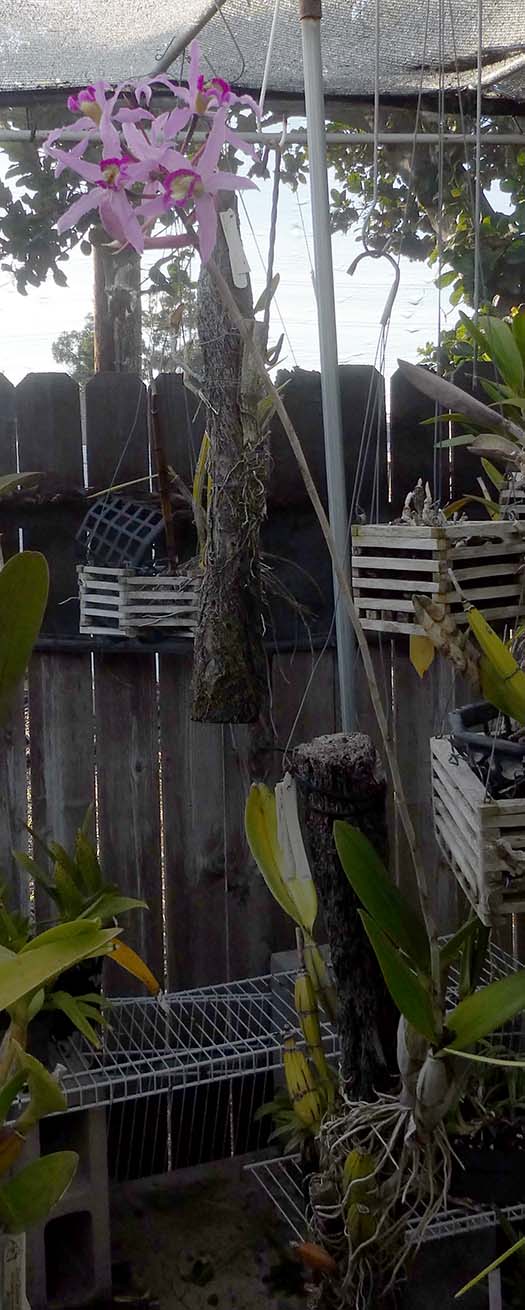 |
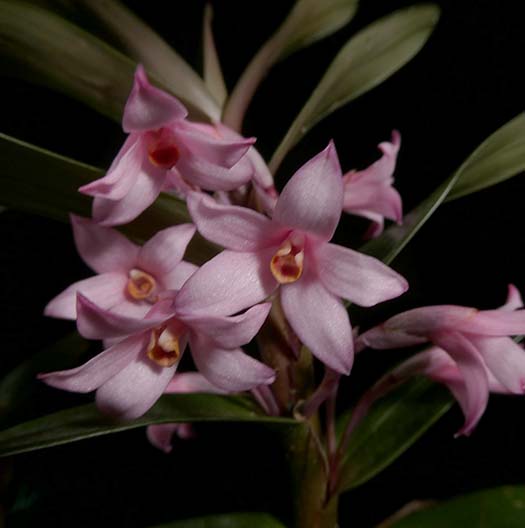
Maxillaria scalariformisI will move this into the greenhouse during the coldest months of winter. It blooms best outside, blooming in both spring and fall, but I have lost several growing it completely outside. Andy Phillips (Andy's Orchids) does grow these outside throughout the year, my climate is very similar, but I have not been able to figure out what is different in the nursery. It does need to stay very wet - I grow it in sphagnum. It is native to Panama, at elevations from 1000-1300 m. (IOSPE) so it really should grow outside. But I can't bear to kill another one. |
|
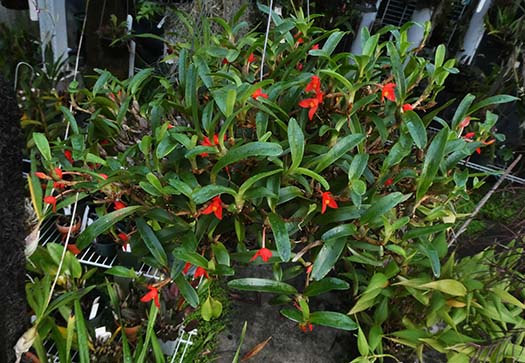
Maxillaria sophronitisA flower machine. It produces several flush blooms each year. It extends far beyond its 6 inch basket, and seems quite happy mostly growing in air. Flowers are only about 1/2 inch, but their brilliant color contrasts with the dark green leaves. In the sun, it almost glows. |
|

Maxillaria variabilis 'Black Eyed Susan'This species lives up to its name - flowers range from yellow to red (with or without gold tips) to this nearly black form. It grows vigorously. |
 |
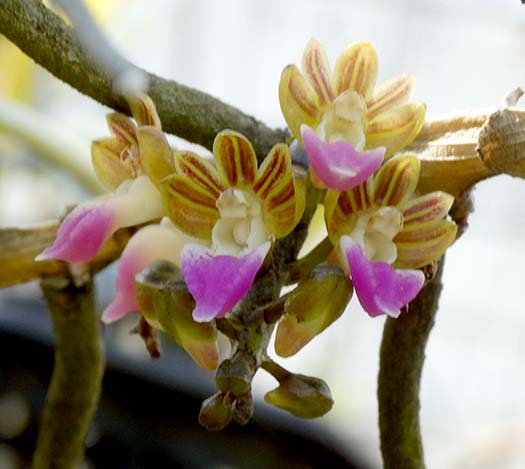 Pelatantheria insectiferaNative to a wide area of northern India and Bangladesh, Himalayas and southeast Asia, at elevations 200-1000 m. It produces flowers along stems that branch in various directions, with roots mostly in the air. Flowers are about 3/8 inch, long lasting. Blooming lasts several months, with additional flower clusters appearing throughout the interval. |
|
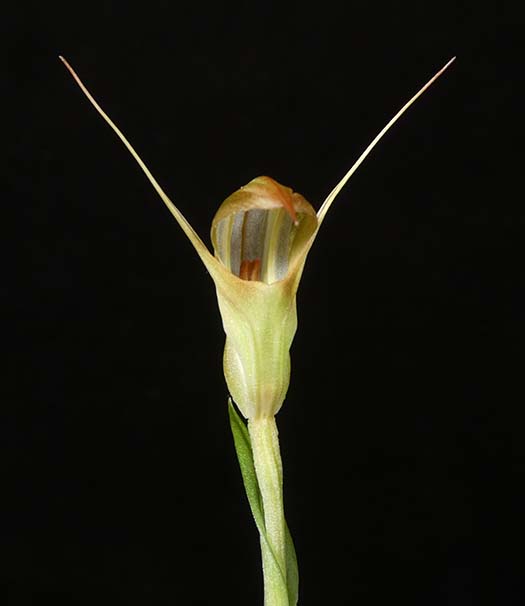 Pterostylis x furcillata
|
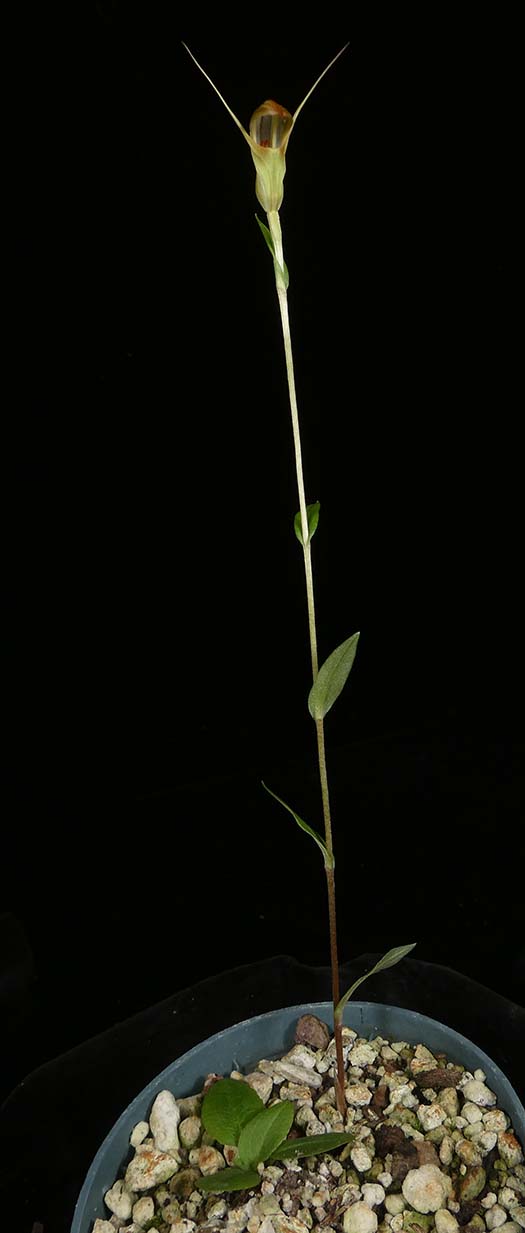 |
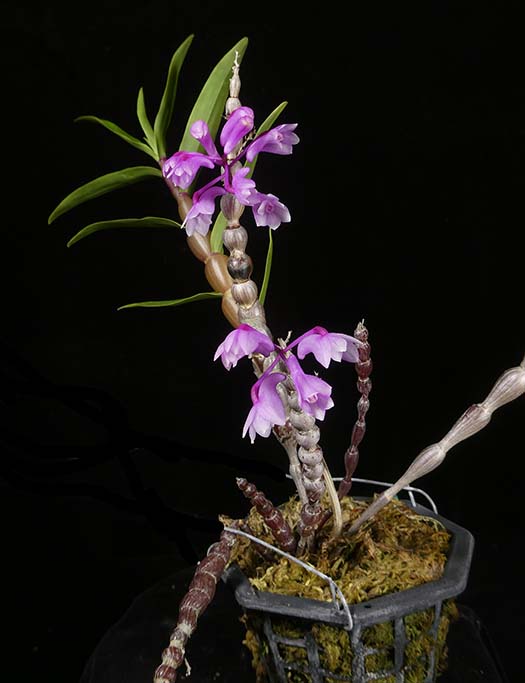
Dendrobium rindjanienseTypically blooms twice a year, on the bare canes. The bumpy canes can bloom multiple times. As the plant matures, the bloomings get better and better. For scale, it's in a 4 inch bsket. It is native to the Lesser Sunda Islands of Indonesia, at elevations around 2000 m, so it is definitely a cool grower, |
 |
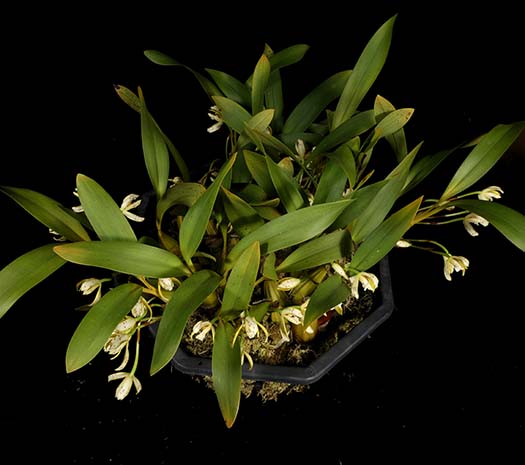
Maxillaria ubatubanaA flower machine. Flowers are similar to Max. picta, but it blooms in the fall. It is native to southeastern Braxil. |
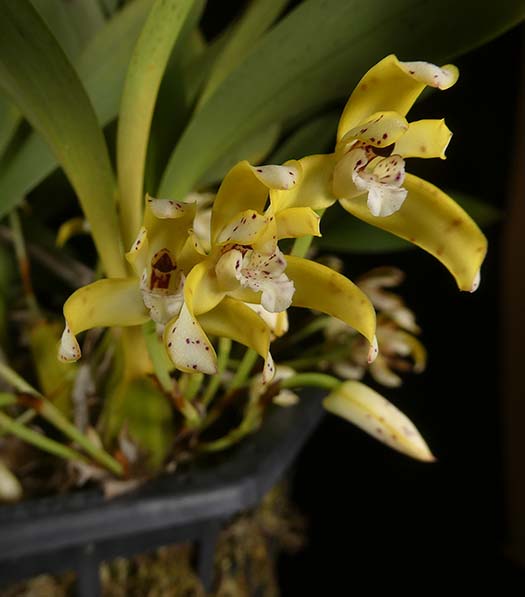 |
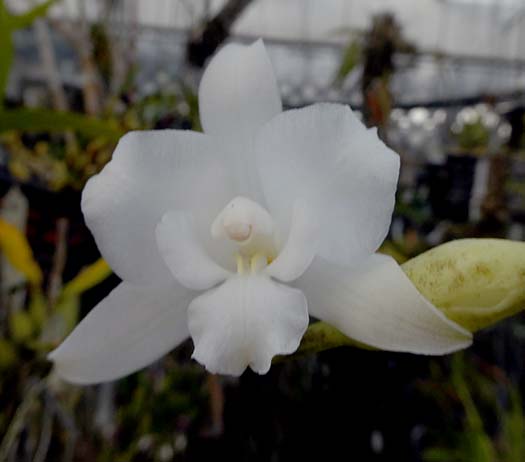
Laelia furfuraceaTypical form on the right, alba above. Native to southwest Mexico, in the state of Oaxaca at elevations 2100-3000 m. |
 |
Ceratochilus biglandulosus
|
|
In the greenhouse... |
|
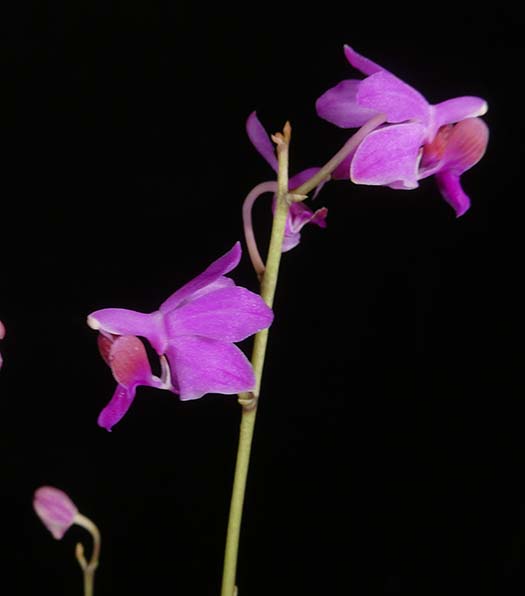
Phalaenopsis (Doritis) pulcherrimaPetals are very reflexed. If one catches it just as the flowers open, they re more flat, but this is what it wants to do. Little birds? |
|
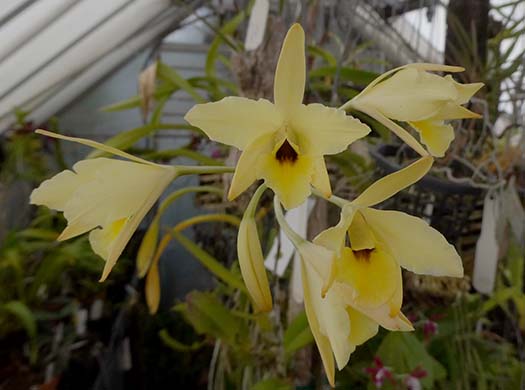 Laelia aureaA close relative of L. rubescens (next month), but this species needs to be kept a bit warmer. Native to northwestern Mexico at elevations of 100-300 m. Flowers are rather short-lived. |
 |
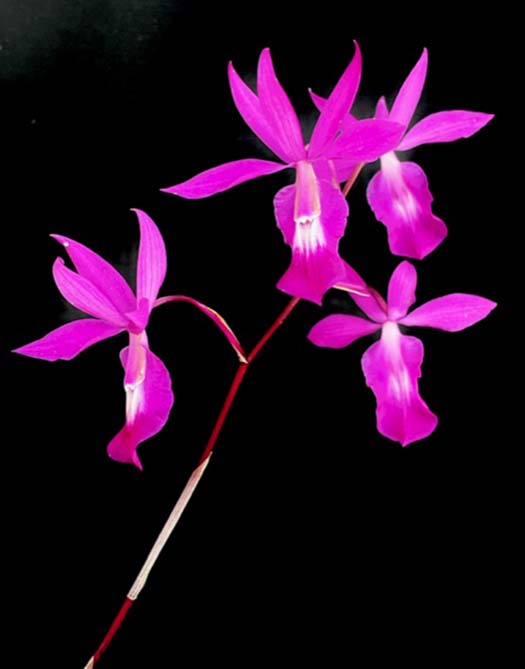
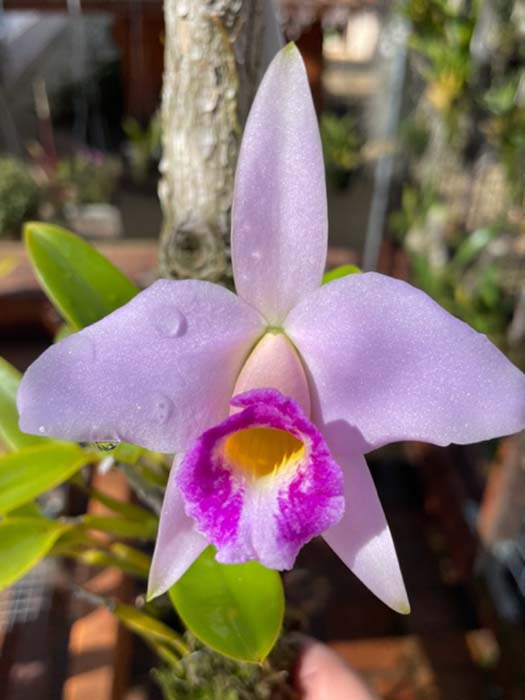
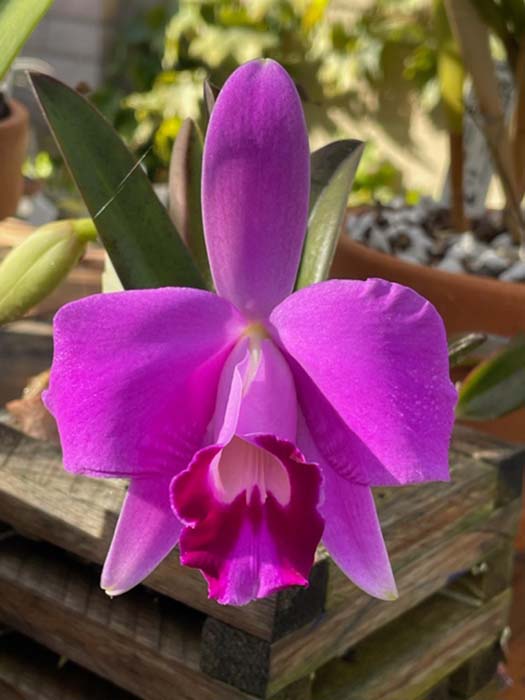
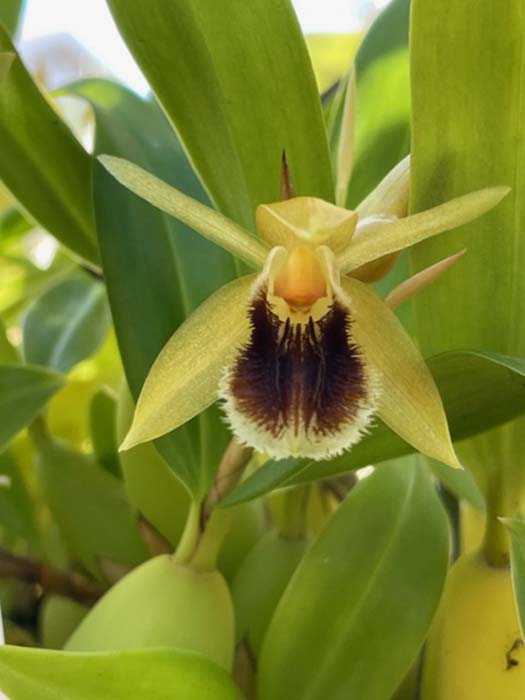
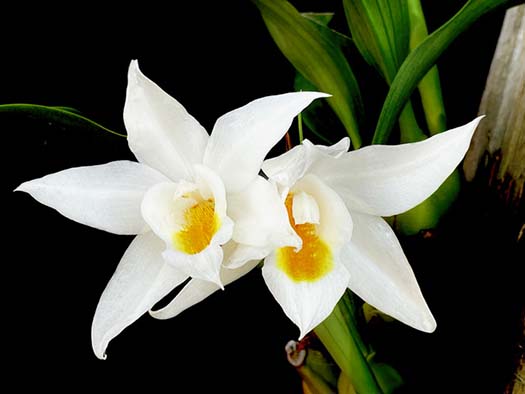

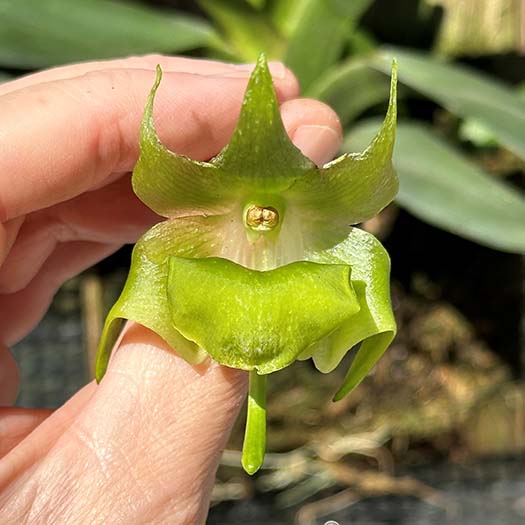

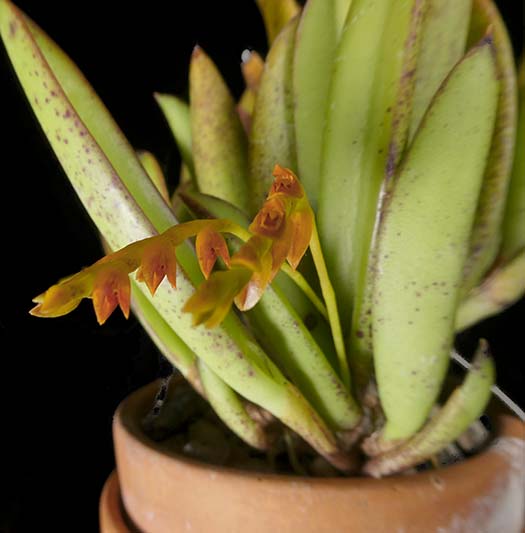
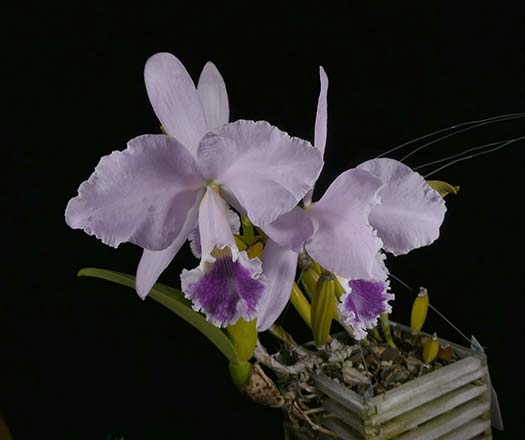
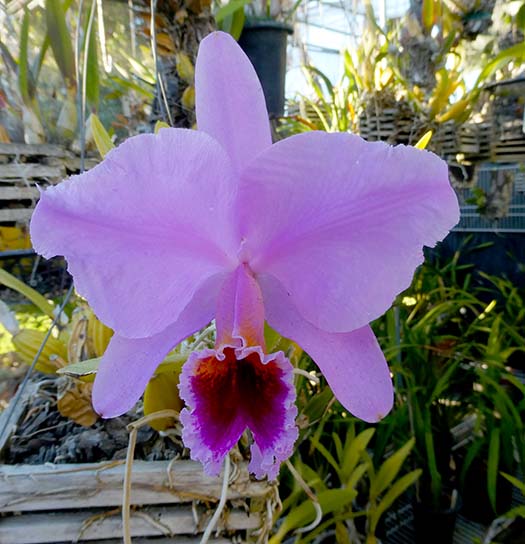
 pumula 1.jpg)
